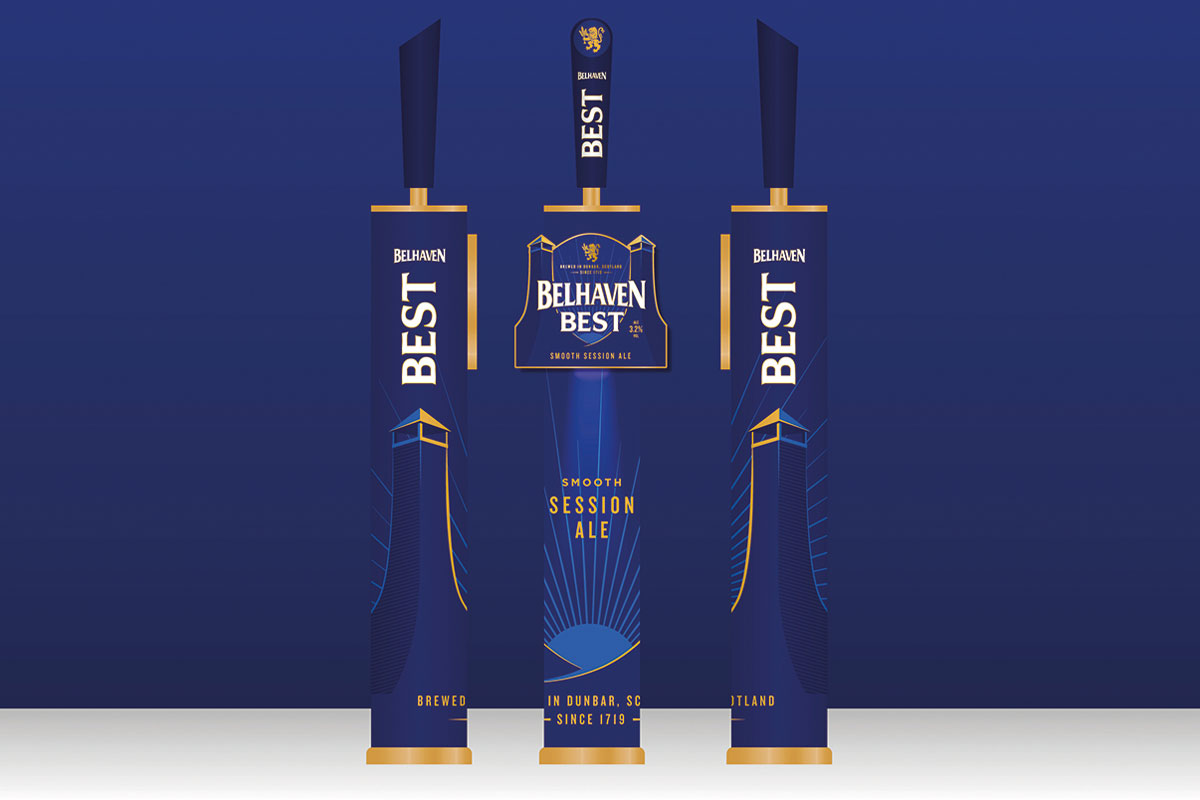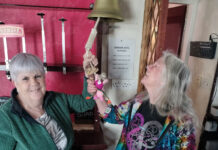
After more than 300 years, Belhaven Brewery continues to be a force in Scotland
Relaunching a legendary Scottish brand is never going to be easy, but that was exactly what Belhaven did earlier this year when it unveiled the new-look Belhaven Best.
The best-selling ale, first launched in 1991, has been a mainstay of Scottish bars for over three decades.
But there’s no denying that traditional ale isn’t quite what it used to be, and though Best remains a category leader, the category overall is down.
Speaking to SLTN, Belhaven marketing lead, Steven Sturgeon, said overcoming some negative perceptions of traditional Scottish ales was one of the issues the new branding had to address.
The answer, said Steven, was to incorporate a more contemporary design which also made reference to the brewery’s long history in Dunbar.
“The first part of the design was to say that we’re brewed in Dunbar, and we’ve been brewing here since 1719,” said Sturgeon.
“And when we did research before and afterwards that really resonated with people.
“And I think this is reflective of the fact that Scotland is proud of Scottish brands.”
As well as the sun’s rays – Dunbar is known as ‘sunny Dunny’ because of the number of days of sunshine it enjoys every year – the new design, which appears on fonts and glassware in the on-trade, also features the brewery’s famous chimneys.
![]()
“A lot of my background is in whisky, and if you look at what the whisky industry does, particularly single malt whisky, it really identifies what are the key assets that give it that authenticity and heritage,” said Sturgeon.
“And of course the thing we have is our chimneys.
“You very rarely see breweries now that have their own maltings. Our maltings are closed but those chimneys represent the maltings that we closed in the 1970s. And they’re iconic.
“They’re beautiful. You just don’t see things like that. So the (design) agency were saying ‘why have you been hiding these?’”.
Though it’s still early days (the new fonts only began rolling out into the on-trade in May) the initial signs from the grass roots trade have been encouraging.
“At this point in time it’s all anecdotal, but I’ve probably visited about a dozen pubs and every one of them has consistently said that it’s recruiting new people,” said Sturgeon.
“Because the tourists are coming in now and clearly it’s appealing to tourists because it’s fresh, it’s new.
“But even in the more traditional pubs they’re saying that people have stopped and said ‘hang on, what’s this?’ And we are beginning to see a little uptick in rate of sale.”
And the new-look design doesn’t seem to have alienated the brand’s existing customer base, who Sturgeon said are ‘very loyal’ to Belhaven Best.
Upbeat about the Best rebrand, the team is now looking at relaunching another of its products – Belhaven Black.
The stout, first launched in 2012, has not been a focus for Belhaven in recent years.
But Sturgeon reckoned there’s a huge opportunity in stout – a view that’s supported by brewers including Brewdog and Camden recently introducing their own stouts.
“Stout’s never gone away,” he said. “There’s always a core of stout drinkers.
“What I’m seeing, which is great, is that it’s kind of having a renaissance. It is being drunk by younger people – and by that I mean people in their late 20s, early 30s. So I think it’s very exciting for stouts.”
Belhaven has also noted the evolving relationship between beer and food in the on-trade, with the brewery’s Discovery range – encompassing a Craft Pilsner, Scottish Oat Stout and Scottish Ale in 330ml bottles – proving increasingly popular in food-led venues.
“We started experimenting a couple of years ago with Dave Jamieson at Archerfield in doing food pairing,” said Sturgeon.
“And these three beers are brilliant with food. We’ve done events at the brewery where we’ve done food pairings.
“I think the big trend we’re all seeing is the relationship between food and drink in pubs.”
Elsewhere, the brewery itself has received considerable, multi-million pound investment from owner Greene King, with the addition of a new kegging line and pasteuriser on the production side as well as the development of the visitor experience, which has allowed the brewery to launch a four-star VisitScotland-accredited tourist attraction.
“It’s great to see that the brewery is getting the love and attention that will take it forward,” said Sturgeon.
But there’s no avoiding the fact that Scotland’s smaller, independent breweries aren’t in a position to spend that kind of money to safeguard themselves and invest in their futures, and Sturgeon called on the Scottish Government as well as organisations such as Scotland Food & Drink to do all they can to protect the country’s brewing sector and ensure it survives.
“It’s really quite sad that so many smaller breweries are struggling these days, post-COVID,” he said.
“I think that’s where we look to people like Scotland Food & Drink and the Scottish Government to say ‘how can we genuinely help the brewing industry in all of its aspects?’
“Rates is a problem. Utilities. Everything on the costs side is causing smaller businesses to struggle. So any support they can give (would be helpful).
“And then the wider thing is how do we collaborate? The Scottish market is a finite size.
“I know Scotland Food & Drink, East Lothian Food & Drink etc. are trying to sell Scottish beer down south, so there’s looking at that.
“There’s a multi-faceted approach to growing food and drink. The whole value chain is quite complex, so it needs interventions at different parts.”



















